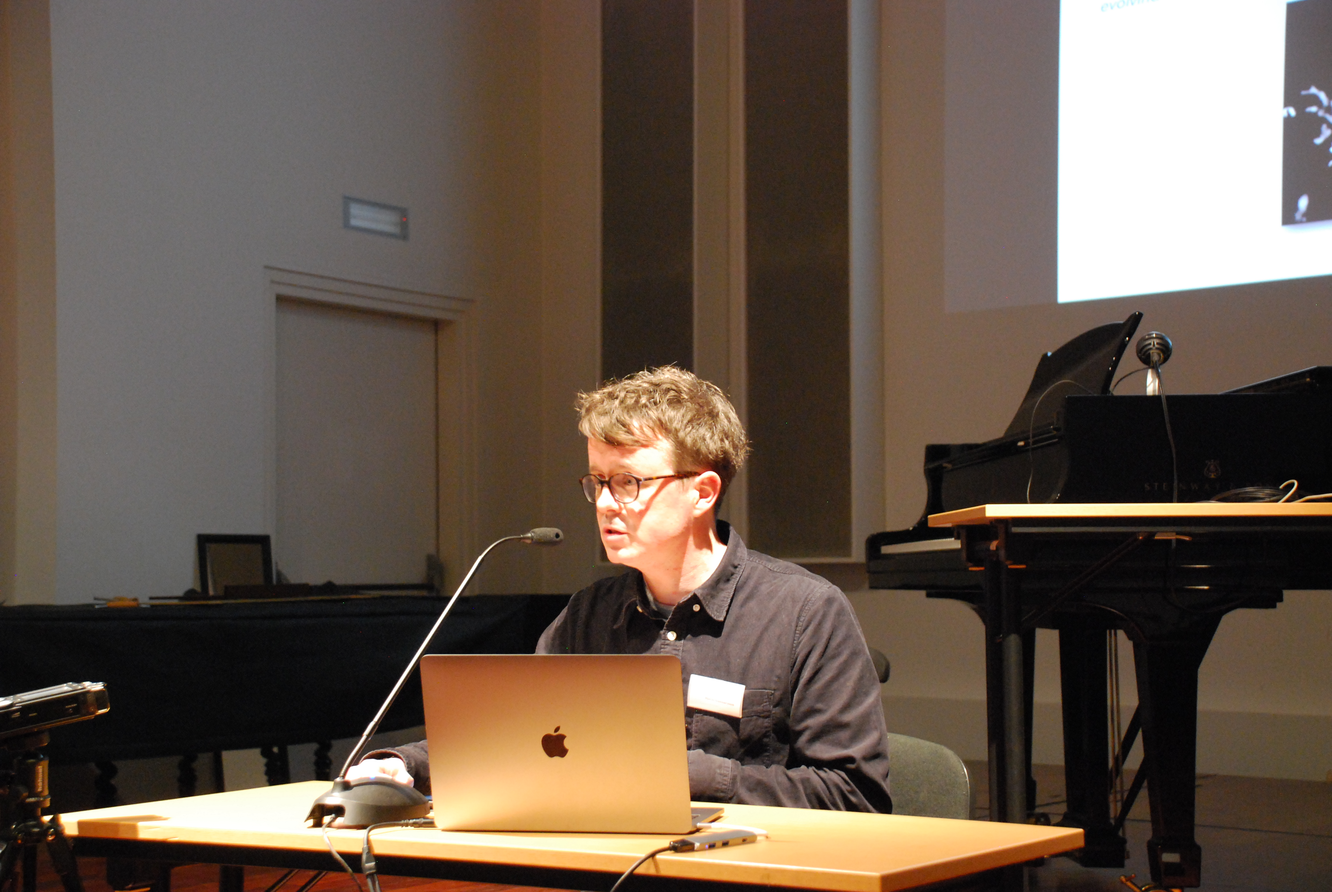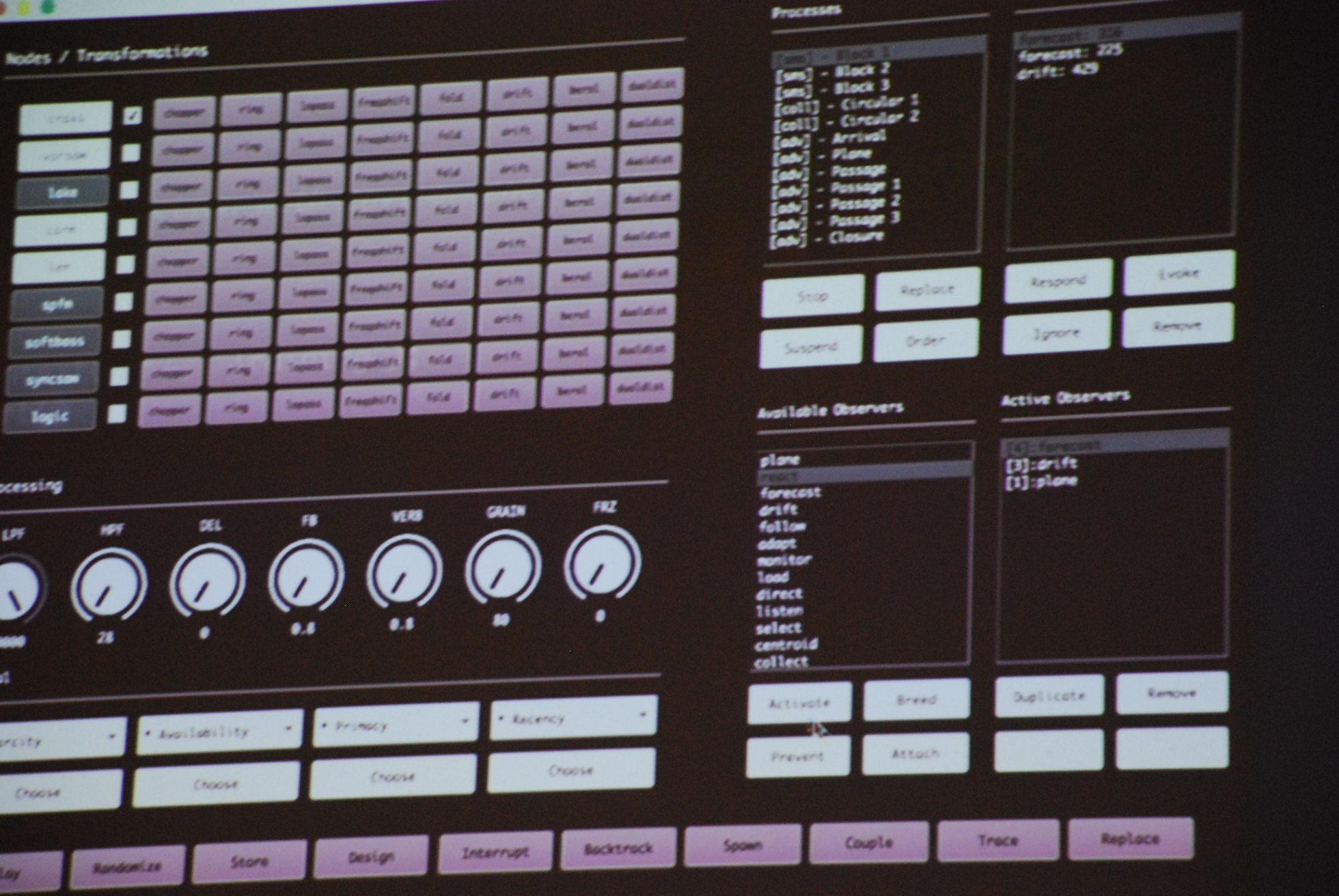The context of generative processes encapsulates relevant data that influence the behavior of an algorithm including mental domains and ‘internal’ dimensions of a particular context such as goals and decision making. Of creative importance is how an algorithmic process reacts to the influence of its environment, the enclosing conditions from which it emerges. Given a clearly defined set of resources, a variety of processes can operate within the boundaries imposed by a certain context. Such a shared space can be seen as a composable structure, a space where both composition and generative activity take place. Contributing to the evolving properties of a certain situation, the persistence of state means that an environment behaves according to the previous activity that has occurred within it. Opposed to an amnesic situation, a persistent environment can resume previous developments, adapt to long-term interactions and evolve over time. Based on persistence and gradual change, the temporal unfolding of generative processes has an important impact on the becoming of compositional algorithms and the sound material they create.
For this presentation, concerns of persistent storage related to computer music will be discussed as well as how the idea of a ‘synthetic environment’ can be introduced to algorithmically generate surrounding conditions of a compositional process. A software framework (ADEC, written in SuperCollider) will be presented that implements of these ideas and a short performance will be made that demonstrates its principles.

